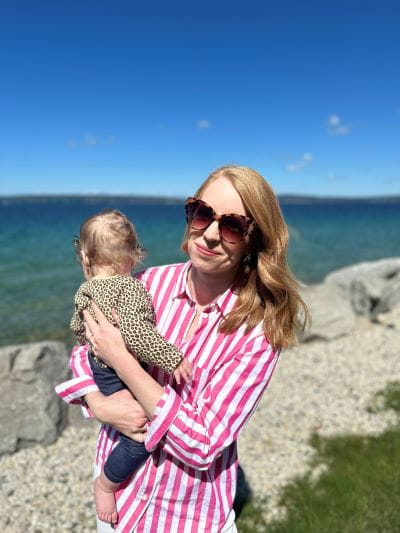September is Women in Medicine month. The Department of Surgery communications team is leading a campaign throughout September in an effort to highlight women surgeons, faculty, residents, staff, advanced practice providers and fellows.
As the only woman to match into plastic surgery residency from her graduating medical school class, Katelyn Makar, MD, is no stranger to blazing her own trail.
“Being a woman in medicine is very exciting and empowering,” said Makar. “I feel like I stand on the shoulders of giants. Women a generation ago had it much harder-- they're the ones who paved the way so that we see greater female representation in medicine.”
Today, Makar is a craniofacial surgeon at Riley Hospital for Children where she specializes in cleft lip and palate operations, in addition to craniosynostosis and other congenital anomalies. She’s also an Assistant Professor in the Department of Surgery at Indiana University School of Medicine, and her research is focused on creating and evaluating a decision support tool for children with cleft lip who are considering revision surgeries.

Outside of her career as a surgeon, researcher and educator, Makar is a wife and mother.
“I was told by some people along the way that surgery might not be a great option for women who want to have a family—I don't think that's true,” said Makar. “I think I've seen many women model being surgeons and also being wives and mothers really well. If you're a woman aspiring to any area of medicine, I think any are a possibility for you.”
Despite growing up in a culture where the narrative was mothers didn’t work and were expected to stay at home, Makar believes that having a career in medicine and having a family at the same time aren’t mutually exclusive. Makar admits she’s always felt a relentless purpose to be a surgeon, wife and mom.

“I've had to reconcile this really clear calling that I felt to be a surgeon with this simultaneous calling to be a wife and a mother,” said Makar. “Those are big roles that fight for my time and attention. I have to be intentional about drawing appropriate boundaries so that I am taking care of patients well and fostering the growth of my career while simultaneously investing in the most important relationships of my life, which are in my own home.”
Balancing her roles as a surgeon, mom and wife doesn’t come without challenges, according to Makar. Some strategies she’s found to be successful include staying present and creating boundaries between her roles.
“When I'm at work, I'm at work and I’m focused on patient care or whatever research projects I'm working on,” said Makar. “When I drive home, I take this time to reset. As I walk through my front door, unless I'm on call, I put my phone away when I get home so that I'm totally focused on my two children and my husband.”
Regarding advice for women who aspire to a have a career in medicine, Makar advises that it’s inevitable running into staff, colleagues, or patients who may assume you're not a physician. She suggests handling these situations with kindness and compassion.
"Be gracious towards those who may assume you're not the physician due to your gender,” said Makar. “Understand that personal experiences shape perceptions, and not every comment is a microaggression. While some remarks may be inappropriate, assuming all are meant to offend is unwise. As women in medicine, we are stronger than that."
Click here to watch Makar's full interview in honor of Women in Medicine Month.
